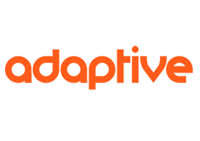Hydration levels are directly linked to cognitive function — and so are an important consideration for school’s hoping to keep students healthy and performing well academically.
Thankfully, there are several ways educators and schools at large can encourage healthy student drinking habits throughout the school day. Read on for our expert tips!
Why hydration in school is important
Drinking water is crucial for keeping your brain functioning well. Hydration helps maintain the balance of electrolytes, like sodium and potassium, which are essential for nerve signalling. This balance ensures that your brain cells can communicate effectively, supporting learning and memory.
When you're well-hydrated, your blood flows more efficiently, delivering oxygen and nutrients to your brain, helping you stay focused and alert. It also aids in removing toxins and waste products from your brain, reducing oxidative stress and protecting brain cells from damage.
Water makes up around 75% of brain mass, and as little as a 1-2% dip in hydration rates can shrink student attention spans, energy levels, engagement, and their overall ability to learn. This is supported by research that shows, on average, students with bottled water during exams perform 5% better than those without.
With these statistics in mind, it’s concerning that approximately 6 out of 10 children in the UK are already dehydrated when they walk through the school gates in the morning. However, a proactive approach to hydration awareness and water accessibility within schools can have a hugely beneficial impact on students and their grades.
Let’s discuss the best ways to encourage healthy hydration among your student body.
Improve water accessibility
Limited access to water is a significant barrier to good hydration. Schools can play a key role in encouraging hydration by installing water fountains or bottle refill stations throughout the premises, ensuring students can get a drink whenever they need it.
Placing these hydration points in high-traffic areas like hallways, cafeterias, near classrooms, and in playgrounds makes it easy for students to drink water throughout the day, improving academic performance and even helping to bring down obesity rates.
Consider accessibility on a per-student basis
As well as general accessibility, it’s important to consider the immediate accessibility of a water solution to different members of the student body. For example, water bottle filling stations are great for students who have bottles, but for those who don’t… they’re not so helpful.
Likewise, a drinking fountain with manual activation might be suitable for the majority of students but difficult for wheelchair users to operate.
To make sure all students have equal access to water, it’s best to select a variety of water solutions. Or, if multiple units isn’t an option, touch-free hybrid units with bottle fillers and drinking fountains, such as the CWS HT HydroBoost Combination BFS, can ensure most students get the water they need throughout the day.
Ensure water solutions are properly cleaned & maintained
The cleanliness of water dispensers has been a particular focus since the global pandemic, but proper maintenance isn’t just to curb the spread of germs and illness; it’s also a fantastic way to encourage use.
Few students will want to use a water solution that appears to be unclean or has a questionable water supply. Similarly, if a water dispenser is malfunctioning, it’s possible that use rates will fall. For example, low water pressure might make it difficult to drink from a water fountain, while overly high water pressure may splash clothes or cause spillages, introducing an access barrier in the form of slip hazards.
Scheduled cleanings and inspections help prevent the build-up of contaminants and keep water solutions in good working order.
To ease the minds of students who may have reservations about using public water solutions, make maintenance schedules known and highlight any integrated cleanliness-boosting features in the solution. For example, the CWS WFP9T can be fitted with a carbon filter to remove trace elements of chlorine in a water supply, while the CWS Eco-UV has a built-in Ultra-Blue UV steriliser.
Incorporate hydration into the curriculum
Educating students about the importance of staying hydrated and its benefits for their health, mood, and cognitive performance can motivate them to drink more water. Lessons can cover how water affects the body and brain, the signs of dehydration, and the advantages of choosing water over sugary drinks.
Interactive activities, such as tracking daily water intake or conducting simple experiments to demonstrate hydration's effects, can make learning about hydration engaging and memorable.
By working these topics into health or science classes, schools can ensure that students understand why hydration matters and how to maintain it.
Encourage students to keep water bottles on their desks
Allowing students to keep water bottles on their desks is a simple yet effective way to encourage regular hydration. When students have easy access to water, they are more likely to drink it frequently, which helps maintain their focus, energy levels, and overall well-being.
Allow bottle refills during lesson time
Minimising disruption during lesson time can be challenging enough as it is, and the last thing teachers need is to introduce more distractions. But there are ways to offer bottle refill opportunities during lesson time while keeping disruption at a minimum:
-
Set specific bottle refill times during less critical parts of a lesson, such as between activities or during independent work.
-
Come up with a silent signal system so students can request a visit to a water dispenser without distracting their peers or interrupting the flow of the lesson.
-
Install water solutions near classrooms.
Provide students with reusable water bottles
Providing students with reusable water bottles is a practical and eco-friendly approach to promoting hydration. It ensures that every member of the student body can access water from hydration points on site, while also spreading awareness about sustainability issues, such as single-use plastics and carbon footprints.
Linking hydration to environmental goals is a great way to incentivise students and keep water consumption at the forefront of their minds.
Offer regular reminders to hydrate
Just as you may offer frequent reminders of school rules, events, or goals, you can do so for drinking more water throughout the day.
Don’t just tell students to remember to hydrate — get creative with your reminders; use:
-
Posters and signage
-
Morning, assembly, and end-of-lesson announcements
-
Digital reminders (emails, school apps, and school social media profiles)
-
Hydration-themed assemblies and events
-
Hydration challenges — and incentives for students who consistently bring and use their water bottles
Lead by example
When teachers and staff prioritise staying hydrated, it reinforces the message that drinking water is important.
Teachers can demonstrate healthy hydration habits by keeping their water bottles on their desks and drinking from them regularly throughout the day. They can also make a point to take quick water breaks and encourage students to join them.
Final thoughts
Encouraging healthy hydration habits in schools is essential for helping students stay healthy, focused, and performing at the best of their abilities.
As is clear from the statistics shared at the start of this post, there is work to be done to boost hydration in schools across the UK, but with the right approach, schools can have a huge impact on student water consumption.
For more information on implementing effective hydration solutions in your school, contact Cactus Water Systems today.












